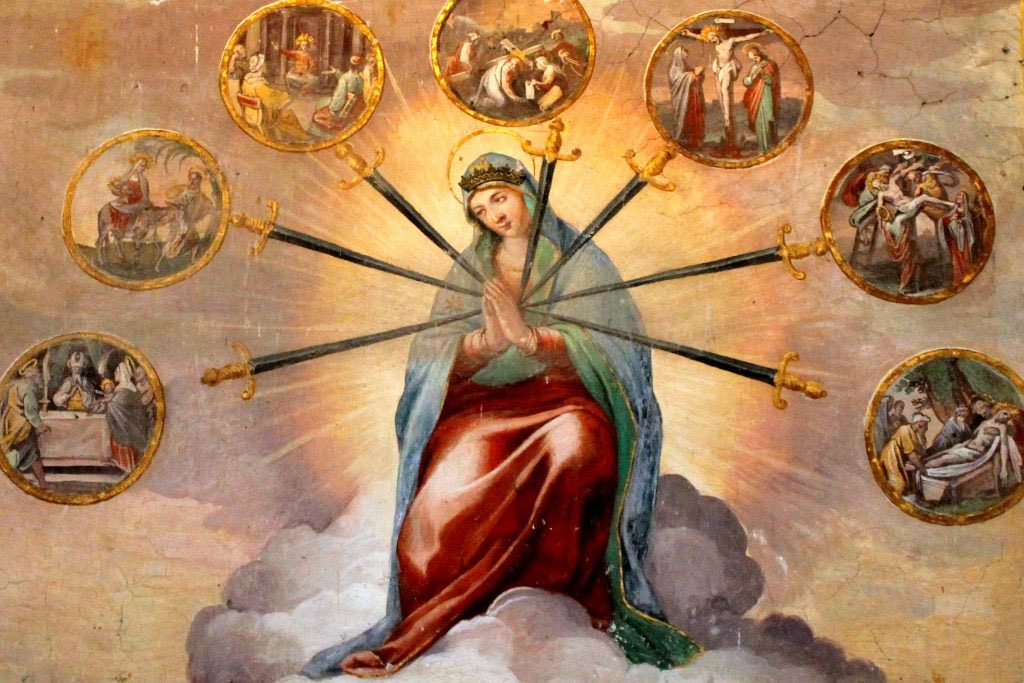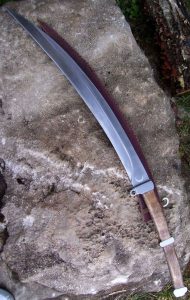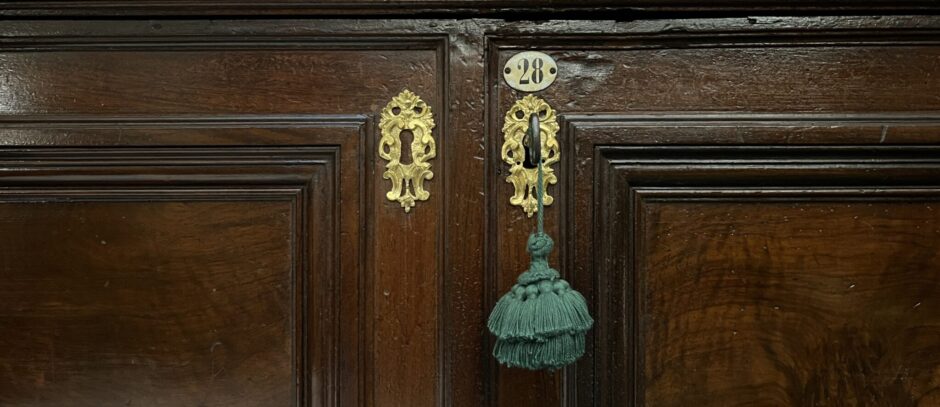
This image of Mary is found in the the Basilica of Santo Stefano Rotondo in Rome.
The month of September is traditionally a time for meditation on and veneration of Our Lady of Sorrows. 15 September, the day next to the Feast of the Exaltation of the Cross, is the Feast of the Seven Sorrows of the Blessed Virgin Mary.
Back in 2019 I published here Our Lady of Sorrows Project.
In the 12th c. German Benedictines began to develop the devotion of Our Lady in her moments of sorrow. In the 13th c, the Servite Order, founded near Florence, made the sorrows of Mary a central dimension of their devotion. They developed, among other things, a kind of rosary and a Black Scapular dedicated to Our Lady’s sorrows. Over the centuries Mary has been depicted not just as the Mother holding her dead Son, Pietà, but also as having seven swords, one for each moment of sorrow attested in Scripture and tradition, piercing her breast. Alternatively, you see her surrounded with images of those moments.
What are the traditional Seven Sorrows?
The Seven Sorrows
- The prophecy of Simeon. (Luke 2:34–35)
- The flight into Egypt. (Matthew 2:13-23)
- The loss of the Child Jesus in Jerusalem. (Luke 2:43–45)
- Mary meets Jesus on the way to Calvary. (Tradition)
- The Crucifixion of Jesus. (Matthew 27:34–50, Mark 15:23–37, Luke 23:33–46, John 19:18–30)
- The Piercing of the Side of Jesus, and His Deposition. (John 19:34)
- The Burial of Jesus by Joseph of Arimathea. (Matthew 27:57–61, Mark 15:43–47, Luke 23:50–53, John 19:40–42)
The foundation of the devotion is in the first of the Sorrows, when ancient Simeon foreshadowed what Mary would “treasure in her heart”.
And Simeon blessed them and said to Mary his mother, “Behold, this child is set for the fall and rising of many in Israel, and for a sign that is spoken against (and a sword will pierce through your own soul also), that thoughts out of many hearts may be revealed.”
The word for “sword” here in Greek is rhomphaia which can be a large sword but is more accurately a curved blade on a short staff, slung on the back, used in close combat by Thracians.
Ancient reliefs show it to be almost like a Japanese odachi, though the odachi is a bit long. Interestingly, the odachi eventually was not used for battle, but became an exceptional temple offering. In any event, Luke uses the odd rhomphaia rather than machaira, the shorter sword of Luke 22:36, which the Lord at the end of the Last Supper instructs His apostles to obtain, the sword which the Lord said he came to bring (Matthew 10:34), and with which Peter cut the ear of the servant of the High Priest (Matthew 26:52). The machaira is the sharp two-edged sword Paul references when describing the word of God (Heb 4:12).

No, in the Temple Simeon mentions the terrible, large curved slashing, thrusting weapon of a notably savage tribe, the rhomphaia.
This is the sword of awesome images in the book of Revelation, the “son of man” “the Alpha and Omega” in ch. 1 from whose mouth came a sharp rhomphaia, at whose feet John fell. This is the rhomphaia of the rider of the pale horse, Death in Rev 6, with power to slay a fourth of all living things. This is the sword of the rider of the white horse, Faithful and True, whose robe was dipped in blood, the Word of God, followed by the hosts of heaven (Rev 19).
To pierce with the rhomphaia, you would need to raise your arms high to thrust downward or, more horribly, keep them low to thrust upward, under the ribs, where the Lord was physically conceived, and into the heart, where He was spiritually conceived.
How terrible were the sorrows that pierced the “soul”, the “psyche”, the seat of feelings and desires, “the heart” of Mary?
Think rhomphaia.


































Pingback: MONDAY EDITION – BigPulpit.com